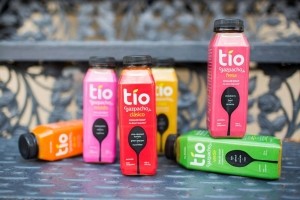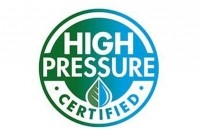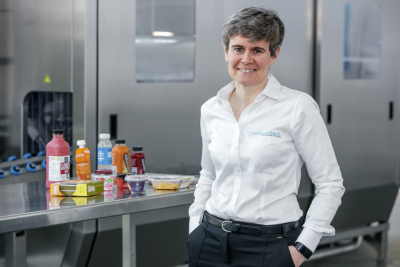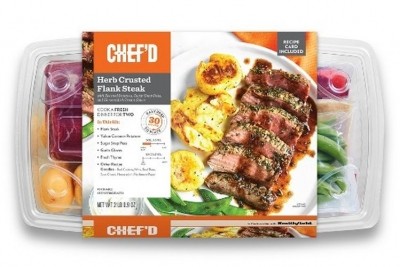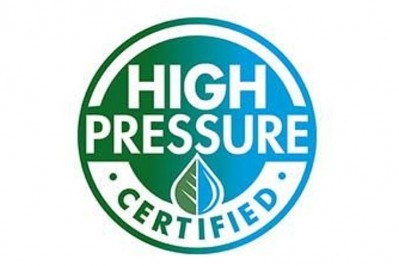Where next for HPP? In conversation with Avure/JBT

“We’re looking at meals where you have a tray from a harder material and [a plastic] skin on top. If you have too much headspace, however, the contents can move around in the vessel if there is too much headspace [room between the product and the lid] and the aesthetic is not great, so the fill ratio has to be right. We’re also seeing larger cups and bowls with meals inside such as microwaveable burrito bowls with five or six different ingredients inside.”
For multicomponent meals containing proteins, veggies and a carbohydrate such as potato, there are many challenges, he said. “Certain types of vegetables can purge liquid during HPP and there are sensory changes, so you have to minimize those changes.”
Meal kit challenges
Right now, retail meal kits such as True Fresh (from True Food Innovations – which has just bought the assets of meal kit brand Chef’d), that deploy HPP only contain prepared (pre-cooked) meats, rather than raw meats, he noted.
“We’ve been working with three major companies in the meal kit space but there are challenges if you want to include uncooked meats, and there’s a lot more research needed, because you can have organoleptic issues with the meat in terms of protein denaturation, which can lead to color changes [proteins in red meat such as myoglobin and haemoglobin can unfold during the HPP process and fold back to a new configuration, resulting in a change of color].
“For ready meals [where the meats are pre-cooked], we’re working with the FDA and USDA refrigerated meal guidelines; your food must be prepared in such a way that non proteolytic clostridium botulinum [a sporeforming bacterial pathogen] does not have an opportunity to cause an issue, because these strains of botulinum can grow even in refrigerated conditions.”
Nut milks
For nut milks, which have a higher, less acidic, pH than juices, for example, clostridium botulinum is again the key challenge, he said, noting that Avure/JBT has just completed a research project on ways to treat nut milks with HPP without using additives that ensure clostridium botulinum is not a threat. (Right now the only nationally distributed nut milk brand using HPP is refrigerated brand MALK, which says it has had its processed validated to address the risk of clostridium botulinum.)
In general, products suitable for HPP need to have a fairly high water content, while the more acidic they are, the better, said Dr Raghubeer. HPP is a non-starter for products such as bread, marshmallows or other dry solids with pockets of air that would cause the product to collapse under water pressure, he added. (Products are subjected to 87,000 pounds of pressure per square inch – six time the pressure you’d experience at the deepest parts of the ocean.)
High pressure processing (HPP) - whereby foods or beverages (often in their final packaging, which must be flexible) are put into a high-pressure chamber that is flooded with cold water and pressurized in order to kill harmful bacteria (salmonella, E. coli, listeria), yeasts and molds without heat – is more expensive than thermal pasteurization.
However, it has several advantages in that it enables products to retain the texture, nutrition and taste of homemade food, with no preservatives or added flavors (ie. a clean label), and a shelf-life long enough to secure national distribution.
HPP is not suitable for carbonated soft drinks, but works well in many other beverage applications, provided they are packaged in plastic (as opposed to glass bottles or cans).
While the biggest categories for HPP in food remain fruits and vegetables (eg. fruit purees, guacamole, jams, salsa etc), meat products, seafood and juices, new growth is coming from ready-meals, functional beverages, chilled soups, salad dressings, sauces, dips, and babyfood.
The evolving landscape for HPP
As for costs, they have continued to come down as machines have become larger and more efficient, while the tolling network is also growing significantly, making the technology more accessible to companies that don’t have the volumes or the resources to buy their own machines, he said.
“The capacity of vessels has increased, but it’s not just about the liters, it’s the diameter of the vessel that delivers a higher throughput enabling you to get more product through a cycle.”
JBT/Avure also has several smaller customers that have bought a machine to use on their own products and are then selling out the extra capacity to other users, said Dr Raghubeer, who noted that when he first started looking at non-thermal pasteurization techniques, he compared HPP, ohmic heating, microwaves, ultraviolet light, and pulsed electric field techniques.
But the only one that has gained significant traction is HPP, he said: “It’s important to keep monitoring these technologies and there may be new technologies on the horizon, but so far, HPP is the only one that has grown significantly around the world.”
The ‘High Pressure Certified’ seal
It's still early days, but the new industry-backed High Pressure Certified seal is gaining traction in the marketplace, meanwhile, he said.
At a basic level, supporters of the seal want to ensure that companies promoting their use of HPP are using it in a responsible manner by properly validating the technology for their products in order to ensure food safety, said Dr Raghubeer.
Supporters of the seal also want brands using HPP to make this clear to consumers via a recognizable seal, rather than implying its use with terms such as ‘cold pressed,’ which technically refers to a method of juicing involving a hydraulic press, but which many consumers now see as a proxy for HPP (sometimes referred to as ‘cold pasteurized’ or ‘cold pressured’), he added.
"People are confusing cold pressed and HPP, but they are two different things."
Over time, the new seal might ensure more consistent use of terminology to describe products treated with HPP, which are variously referred to as ‘cold pressured,’ ‘high pressure processed,’ or ‘cold pasteurized,’ he added.
The Cold Pressure Council - which launched in April 2017 – is developing best practices for the high pressure processing (HPP) industry and the new High Pressure Certified seal. The council consists of nine founding members: JBT/Avure Technologies, Hiperbaric, American Pasteurization Company, Universal Pure, Suja Juice, Campbell Soup, Evolution Fresh, West Liberty Foods and Good Foods Group.
The Council is developing category-specific guidelines governing the safe use of HPP, beginning with juice (with dips, dressings, proteins and other categories to come), which must be followed by companies wishing to use the high pressure certified seal on pack.
Brands that have received verification from a third party of their processes, hazard analysis and critical control points (HACCP) plan and validation studies can then license the use of the new logo for $250/SKU/year.
Rather than requiring companies using the seal to undergo expensive standalone audits, the requirements can be easily tagged onto established independent audits for standards such as BRC.
Why HPP?
- Food safety – HPP kills bacteria, yeasts and molds
- Extended shelf life – HPP can extend shelf life on freshly squeezed juice, for example, from a few days to a few weeks
- Nutrient retention – products that have not been heat-treated are less prone to nutrient degradation
- Organoleptic factors – for a more ‘freshly-made’ taste and texture
- Clean labels – HPP allows firms to eliminate some preservatives and other additives
- Sodium reduction - Some manufacturers have used HPP to reduce sodium in applications where it's being used as a preservative
